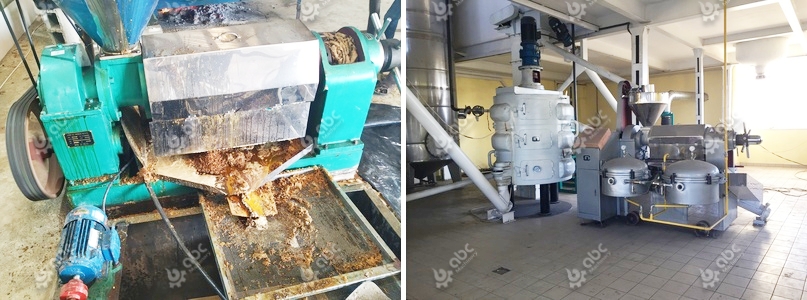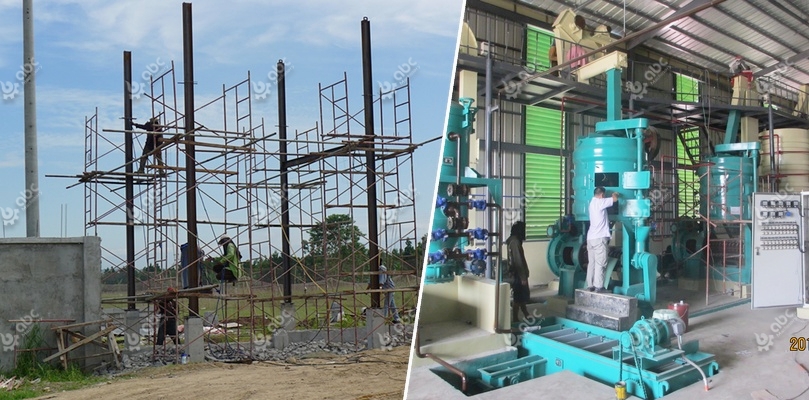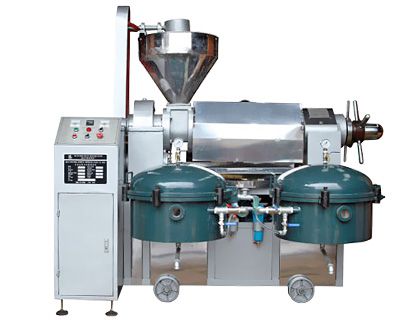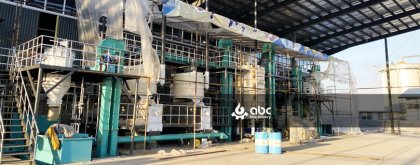
Understanding Dry and Wet Coconut Oil Making Process and Machines
Key Principles and Processes of Dry vs Wet Coconut Oil Extraction
The coconut oil extraction process plays a crucial role in defining oil quality, yield, and production efficiency. Understanding the core differences between dry vs wet coconut oil extraction machine operations helps industrial users design systems that maximize profitability and consistency.
Dry Coconut (Copra) Oil Extraction Process: Steps and Advantages
Dry extraction involves removing moisture from the coconut meat before oil recovery. Typically, fresh coconut kernels are dried at 80–90°C for 6–8 hours, reducing moisture content to below 6%. The dried copra is then ground into fine powder and pressed using mechanical screw expellers operating at 25–30 MPa. The expelled oil is filtered and refined before packaging. (Read More: Cococnut Oil Refinery Process Tips>>)
Key advantages include simple setup, low maintenance (average maintenance cycle of 600–800 operating hours), and suitability for medium-scale plants producing up to 3 tons/hour. However, dry extraction usually yields 55–60% oil recovery, slightly lower than the wet method.
Wet Coconut Oil Processing Method: Techniques and Benefits
In contrast, wet extraction uses fresh coconut milk as the raw material. The process starts with shredding and mixing with warm water to form an emulsion, followed by high-speed centrifugation (at 6,000–8,000 rpm) to separate oil from aqueous and solid phases. Filtration and drying steps follow to achieve 99.8% oil purity.
This process retains more natural antioxidants and nutrients but requires sophisticated centrifuge systems and strict temperature control between 45–50°C to prevent emulsion breakdown. Typical wet extraction plants yield 65–70% oil, with higher energy consumption.
Dry vs Wet Coconut Oil Extraction Comparison Table
| Parameter | Dry Method | Wet Method |
|---|---|---|
| Moisture in Raw Material | <6% | 40–50% |
| Typical Oil Yield | 55–60% | 65–70% |
| Operating Temperature | 80–90°C | 45–50°C |
| Equipment Type | Screw Coconut Oil Expeller | Centrifugal Separator |
| Purity Level | 95–97% | 99.8% |
Dry vs Wet Process Optimization
In industrial practice, combining pre-dehydration (from dry extraction) with centrifugation (from wet extraction) can increase total oil yield by up to 12% compared to single-method systems. This hybrid model is gaining adoption in high-volume coconut oil plants across Southeast Asia and India.
Enhance your coconut oil extraction performance with a customized dry and wet process integration plan – contact our process engineers today.
Major Coconut Oil Extraction Machines and Structural Design Features for Dry and Wet Method
Copra oil machines primarily use screw expellers featuring hardened steel shafts, helical worm conveyors, and integrated heating chambers. A typical 15 kW expeller produces 300–500 kg/h, with energy consumption around 0.25 kWh/kg.

Low Cost Coconut Oil Extraction Machine for Dry Processing (Copra Oil)
Wet extraction machines rely on stainless steel centrifuges, equipped with multi-stage bowl separators and adjustable speed drives. Key components include:
- Heating System: Pre-warming the coconut emulsion to optimal viscosity.
- Dehydration Module: Evaporates moisture before separation.
- Centrifugal Separator: Spinning at up to 9,000 rpm for efficient phase isolation.
Maintenance cycles differ: expellers need inspection every 500 hours, while centrifuges require dynamic balancing every 300 hours. Selecting robust materials such as 304 or 316 stainless steel ensures long-term reliability under tropical humidity.
Our company specializes in the manufacturing and construction of copra oil extraction machinery and plants. Of course, if you wish to produce virgin coconut oil, we can also help you achieve that.
Partner with us to identify the best coconut oil extraction machine configuration for your production scale and budget.
Improving Coconut Oil Processing Performance and Operating Cost Control
Production efficiency depends not only on machine capacity but also on energy consumption and process integration. Dry systems are energy conservative, consuming 220–250 kWh per ton, whereas wet systems may reach 300–350 kWh per ton due to heating and centrifugation demands.
However, the wet process delivers higher oil recovery, offsetting its higher power usage in large-scale applications.
Balancing Performance and Operating Cost
Plants producing over 10 tons/day often find wet extraction more profitable due to increased yield, while small coconut oil plant business prefer dry systems for lower capital expenditure (typically 30% lower initial investment). Intelligent controllers and variable frequency drives (VFDs) can cut energy usage by another 8–12%.
Get your energy-optimized extraction design blueprint from our engineering team today and achieve measurable performance gains.
Coconut Oil Making Process Optimization Strategies for Industrial Plants

Coconut Oil Mill Plant Construction Site in Philippines
Choosing between dry and wet systems depends on production scale, target oil grade, and automation level. Small and mid-sized factories often combine a pre-drying unit with a compact centrifuge, achieving efficiency gains of 10–15%.
Integrating automated control systems improves temperature and pressure stability, reducing human error and oil loss by up to 5%. Advanced plants use hybrid coconut oil extraction technology to merge yield and purity advantages.
Unlock higher productivity and superior oil quality – connect with our industrial solutions team for a tailored process optimization plan.
We receive enquiries in English, Español (Spanish), Русский язык (Russian), Français (French) and العربية (Arabic).Our professional team will reply to you within one business day.Please feel free to contact us!



 Screw Oil Press
Screw Oil Press Small Oil Mill Plant
Small Oil Mill Plant Small Oil Refinery
Small Oil Refinery Automatic Oil Press
Automatic Oil Press Multifunction Oil Press
Multifunction Oil Press Hydraulic Oil Press
Hydraulic Oil Press


![[Presidential Visit] Zimbabwe 30 Tons/Day soybean oil plant for Extraction and Refinery Was Successfully Completed](/uploads/allimg/soybean-oil-plant-press-refine-business-lp.jpg)

